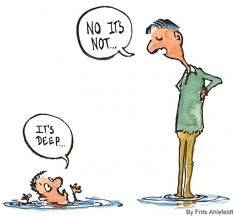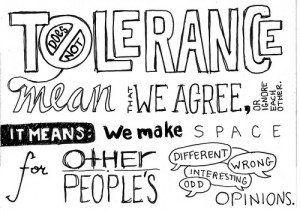Make Your Communications Powerful With These Two Ingredients:
I run interpersonal communication workshops with executive teams on a regular basis. Usually they are non-threatening, lighthearted learning affairs with everyone feeling at ease and interested. I like to think this is because of my skill as a facilitator and my winning smile…. But ultimately I know that it’s an interesting topic that everyone engages with because it is about them and the challenges facing them when communicating with others.
This non-threatening environment seems to help participants feel comfortable with getting ‘colourful’ around their descriptions of other types of people with whom they happen to deal. Describing extroverts as gregarious, flaky, unrealistic and overpowering and introverts as methodical, pedantic, formal and boring. (Including others not so suitable for younger ears!!!)
Not surprisingly, participants find it much easier to identify all the characteristics that annoy the hell out of them, on a daily basis.
They usually agree that this predisposition to seek the conflict is age old, self- perpetuating and limiting to the effectiveness of our communications.
I believe it is possible to make your communications powerful with these two ingredients. (Tweet this)
The Two Ingredients:
People have preferences in their dealings with the day, and everyone in it, and those preferences serve them quite nicely, thank you very much. Those preferences are NOT going to change. So the only thing that can change is our approach to those preferences. That may be “common sense”, however, in my professional experience, this “common sense” is just not that common anymore. People tend to lock horns at first offence rather than taking a deep breath, counting to ten or using whatever technique introduces a “pause” in proceedings. This argument is lacking a tablespoon of perspective and a pinch of tolerance.
Perspective
 When all things are equal, we tend to see the world, and everyone in it, through a perspective that has been formed over years of experience, arising out of our family life, our education, our circle of friends, our careers, etc.
When all things are equal, we tend to see the world, and everyone in it, through a perspective that has been formed over years of experience, arising out of our family life, our education, our circle of friends, our careers, etc.
In short, we engage with the world in the manner to which we have grown accustomed. Rarely do we pause to wonder, does everyone else see this the same way I do? Usually our view is gospel, and we all know how it turns out when religion gets involved #HolyWar.
Look and you will find it; what is unsought will remain undetected – Sophocles (Tweet this)
When we look from only one perspective i.e. our own, we miss all other information from any other perspective.
So how do we address the “unsought” in our communications?
Well, there is a plethora of research supported tools like MBTI, DISC and Insights, all of which attempt to be a little more predictive about personality preferences.
While I do not condone the pigeon-holing of humans into boxes; at the very least this is in breach of the Geneva convention, these tools do present us with a platform from which to, more deliberately, test and tease and play in our communications.
Communicating with other humans is a ‘doing’ thing. We don’t become experts by reading a book. (Tweet this)
We try, we fail, we succeed, we royally screw up and all the time we learn what works and what does not. These tools provide us with a little more enlightenment around what works and what does not; in advance of our learning that the hard way. So rather than “suck it and see”, our communications become a little less “Suck” and a little more “See”.
They help us to admit, at least in the recesses of our own minds, that:
There are other types of people in the world and they are as valid as I am. (Tweet this)
Tolerance
 When we can genuinely say to ourselves that everyone else is as valid as I am, we immediately impact on our levels of tolerance. We tend to either make allowances or seek to understand more deeply, before we slap them across the face with a leather glove and demand satisfaction. We introduce a pause between the stimulus and reaction that, in turn, facilitates that reaction manifesting as a more measured response!
When we can genuinely say to ourselves that everyone else is as valid as I am, we immediately impact on our levels of tolerance. We tend to either make allowances or seek to understand more deeply, before we slap them across the face with a leather glove and demand satisfaction. We introduce a pause between the stimulus and reaction that, in turn, facilitates that reaction manifesting as a more measured response!
Anything that helps us deliver measured responses has got to be worth a second look.
So it’s easy, right? All we do is accept people where they’re at and we are communicating Disney style; fluid, effective and efficient with the bunnies and birds of the forest helping us clean up. But we have only admitted that differences exist. We haven’t explored what these differences mean for our interactions with others.
It’s Good to Talk:
 Tools such as Insights, DISC and MBTI provide a vocabulary to articulate these differences and initiate conversation.
Tools such as Insights, DISC and MBTI provide a vocabulary to articulate these differences and initiate conversation.
Speak to a man in a language he understands and you speak to his head. Speak to him in his language and you speak to his heart – Nelson Mandela
In this case “his language” refers to his observable behaviours.
How he does stuff.
In Ireland, for example, with more accents per square mile than you can shake a stick at, one can make a pretty good stab at the parish he’s coming out of, his politics, and whether he played football, hurling or one of them foreign games, just from his inflection and turn of phrase. In much the same way, you can discern a lot about someone’s personality preferences by watching how he or she goes about getting stuff done.
- When we recognise the person’s preference, we open ourselves to their perspective.
- Developing a working knowledge of the language of that preference and using it in our interactions with that person, displays, non-verbally, an openness and tolerance towards that perspective.
- We speak directly to their heart and, in doing so, exponentially increase the likelihood of being heard and understood.
We also, in some small way, narrow the gap between “Never the twain shall meet” and getting the “Twains” to shake hands.
It’s work, but it’s worth the effort.
Your challenge as a leader, should you choose to accept it, is:
- To familiarise yourself with your own communication preferences
- To explore those of your team, your colleagues and your line manager
- To stretch a little to tailor your approach to those people
- And then to practice, practice, practice
I would love to hear your thoughts, field your questions or partner with you on the challenge. Get in touch.